DIY Tips for Repairing Common Range Hood Issues
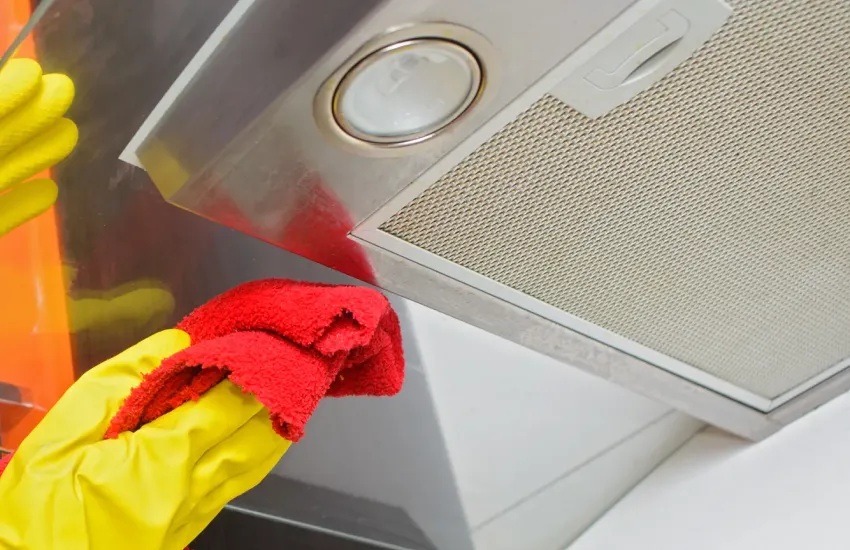
Range hoods are crucial for maintaining air quality and keeping your kitchen safe, but when things go wrong, you don’t always need to call a professional. This guide walks you through simple DIY repairs to address power issues, ventilation problems, strange noises, lighting failures, and control panel malfunctions. Regular upkeep can help you avoid bigger problems, so let’s dive into these repair tips to keep your range hood running smoothly.
DIY Tips for Repairing Common Range Hood Issues
Just think about cooking a delicious dinner, only to be greeted by smoke filling the kitchen because your range hood isn’t working. It’s every home cook’s nightmare. But before you call in an expensive repair technician, why not take a crack at fixing it yourself? Many common range hood problems can be solved with just a few tools, a little patience, and a willingness to dive in.
Range hoods play a vital role in your kitchen, whisking away cooking fumes, smoke, and grease. They keep your space breathable and clean, ensuring you’re not breathing in unhealthy air while preparing meals. But, like all appliances, they’re prone to issues over time whether it’s a power failure, ventilation problem, or annoying noise. Fortunately, with the right guidance, you can tackle these issues head-on.
Ready to roll up your sleeves and fix that range hood? Let’s get started!
Your fridge is a kitchen superstar as it keeps all your food fresh and drinks cold.
But does the fridge feel warm when you open it?
Is there water all over the floor?
Fridge issues are the worst!
Power-Related Issues: How to Troubleshoot and Fix Common Problems
One of the most frustrating issues with a range hood is when it refuses to turn on. Before you panic or call a repair technician, check for some common power-related issues that you can fix yourself. Here are a few troubleshooting steps to help get your range hood back up and running.
Power-Related Issues
Power-related issues are one of the most common problems when a range hood stops working. If your hood isn’t turning on, here’s how to troubleshoot the problem:
- Check the Power Source:
- Plug and Socket: First, make sure the range hood is plugged into a working outlet. Sometimes, appliances get unplugged by mistake, or cords can become loose.
- Circuit Breaker: If it’s still not working, check your home’s electrical panel. Range hoods can trip the circuit breaker, especially if there’s a surge or overuse. If the breaker is off, simply reset it by flipping the switch back.
- Fuse Replacement: Some range hoods come with a fuse. If resetting the breaker doesn’t solve the issue, the fuse may have blown. Replacing the fuse is an easy fix if you have a spare on hand.
- Test the Outlet:
- Use a multimeter to verify if the outlet is receiving power. If there’s no voltage, the issue might be with your home’s electrical system.
- GFCI Outlets: If your range hood is plugged into a GFCI outlet, check to see if the reset button has tripped. These outlets automatically shut off power if they detect moisture or electrical issues, so pressing the reset button might restore power.
- Inspect Wiring Connections:
- Loose Wires: Turn off the power to the range hood and check the wiring inside. Loose or damaged wires can cause intermittent power loss. If you’re uncomfortable doing electrical work, it’s best to call in an electrician.
Fan and Ventilation Problems
A range hood that doesn’t ventilate properly can leave your kitchen smelling like a smokehouse. Let’s look at how you can fix fan and ventilation problems:
- Clean or Replace Filters:
- Soak Filters: Dirty filters are often the culprit behind poor ventilation. Remove the grease filters and soak them in hot, soapy water for about 10-15 minutes. This will loosen grease and debris.
- Scrub Gently: After soaking, use a soft-bristled brush to scrub away any remaining grease. Be gentle so you don’t damage the filter.
- Dry Thoroughly: Once cleaned, rinse the filters with warm water, then dry them completely before reinstalling them.
- Inspect the Ductwork:
- Check for Blockages: Ductwork is another common area where issues arise. Shine a flashlight into the duct to check for any blockages or accumulated grease that may be obstructing airflow.
- Clean the Ducts: Use a long brush or a vacuum attachment to remove debris. If the ducts are particularly dirty, a professional cleaning service might be needed.
- Check the Fan Motor and Blades:
- Clean the Fan Blades: If the fan blades are dirty, they can cause the motor to overheat and work less efficiently. Use a microfiber cloth or soft brush to clean the blades of grease buildup.
- Tighten Loose Screws: If the fan is wobbling or making noise, it might have loose screws. Tighten all screws securely.
- Faulty Motor: If the fan still doesn’t work properly, the motor might be faulty. Replacing a motor is more complex and may require professional assistance.
Noise Issues
If your range hood sounds like a jet engine, there’s something wrong. Let’s break down how to tackle noise issues:
- Tighten Loose Parts:
- Fan and Motor: Often, a rattling or buzzing noise is caused by loose fan blades or motor components. Inspect and tighten any screws or bolts that are loose, particularly around the fan housing.
- Inspect Motor Bearings:
- Humming Sound: A constant humming or whirring noise may indicate that the motor bearings are worn out. Motor bearings are crucial for the smooth operation of the fan. If these bearings are faulty, the motor may need to be replaced entirely.
Lighting Problems
Are the lights not turning on? This can be one of the easiest problems to fix, and here’s how you can address it:
- Replace the Bulbs:
- Simple Fix: If the light isn’t working, start with the basics—replace the light bulbs. It’s often the simplest solution to get your lights back on.
- Check the Light Switch:
- Test the Switch: If the bulbs are fine but the light still isn’t working, use a multimeter to check if the light switch is functioning properly.
- Inspect Wiring Connections:
- Loose or Damaged Wires: Look for any loose or damaged wires connected to the lights. If you find any, repair them carefully. If you’re unsure about handling electrical work, it’s better to consult a professional.
Control Panel Issues
Is your range hood not responding to the control panel? Here’s how to troubleshoot it:
- Clean the Control Panel:
- Remove Grime: Over time, grease and grime can accumulate on the control panel, making it hard to use the buttons. Wipe it down with a damp cloth to remove any buildup.
- Test the Fan Control Switch:
- Multimeter Test: Use a multimeter to test the fan control switch. If the switch is malfunctioning, you may need to replace it.
- Inspect the Control Board:
- Multiple Issues: If several functions are not working properly (fan speeds, lights, etc.), the control board may need to be replaced.
Maintenance Tips
Prevent future problems with regular maintenance:
- Regular Cleaning:
- Monthly Cleaning: Clean the exterior and filters monthly. For heavy use, clean more frequently to keep your range hood running smoothly.
- Inspect Components:
- Semi-Annual Check: Every 6 months, inspect key components like the fan blades, motor, and ducts to ensure they’re in good working condition.
- Keep Ducts Clear:
- Prevent Blockages: Regularly check for grease buildup and debris in the ducts to maintain optimal ventilation.
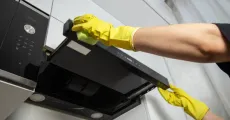
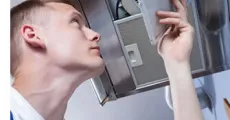
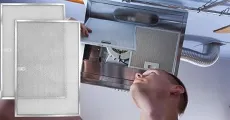
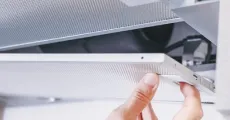
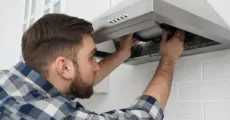
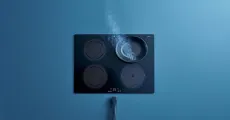
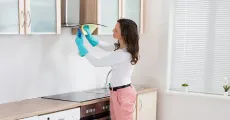
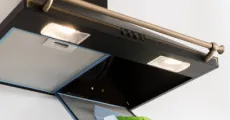
Final Call
Don’t let range hood problems leave your kitchen in a smoky mess. With these DIY tips, you can address common issues like power failures, fan malfunctions, noise, lighting problems, and control panel glitches all on your own. Regular maintenance will also keep your range hood running smoothly for years to come, helping you maintain a cleaner, safer kitchen.
Need help with your range hood repairs? Contact CLT Appliance Repair today for expert assistance and reliable range hood repair service to keep your kitchen appliance in top condition! We deliver the best with customized strategies!
FAQs
If the motor is making unusual noises or the fan isn’t moving air properly despite cleaning, it may need to be replaced. A faulty motor can also cause weak suction or erratic fan behavior.
Loose fan blades or screws are often the cause of rattling noises. Tightening these components and cleaning the fan blades should help eliminate the sound.
Start by replacing the light bulbs, as they may have burned out. If that doesn’t work, test the light switch and inspect the wiring for loose connections or damage.
Clean the filters at least once a month or more frequently if you cook oily foods. Regular cleaning ensures optimal airflow and helps maintain the efficiency of your range hood.
Perform regular cleaning and inspect the motor, fan, and ducts every few months. Keeping the range hood well-maintained will help prevent major issues down the line.
Don't let a malfunctioning Range Hood disrupt your daily life. Contact CLT Appliance Repair today at 704-606-9043 to schedule your Range Hood repair service.
We'll have your Range Hood back to optimal performance in no time!.

